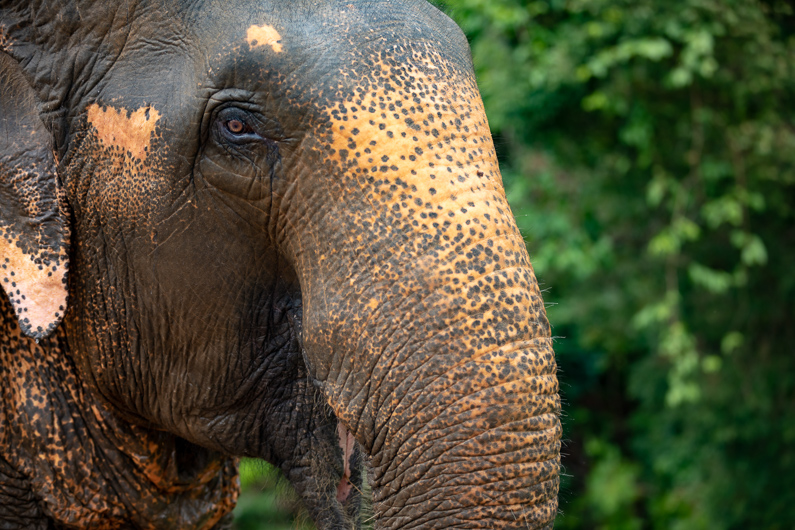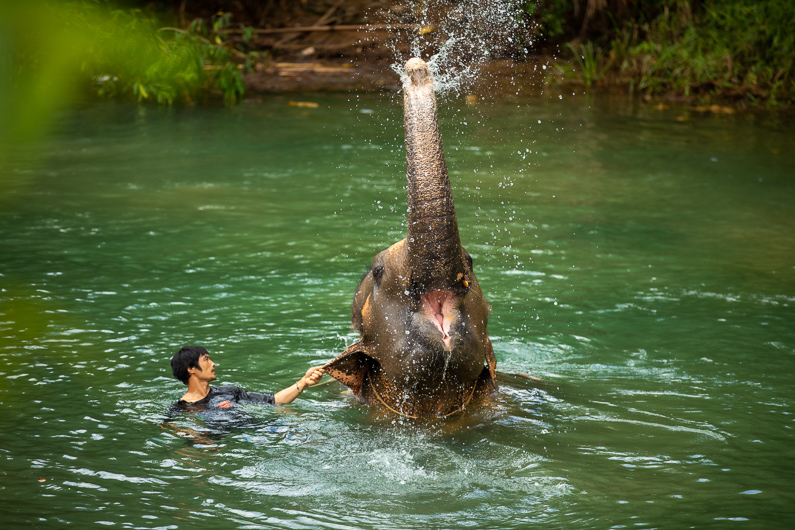Text : Stefan Christensen
Elephas maximus is the latin name for the Asian Elephant, but its true meaning is love.

It’s love between man and animal you see when the elephant Nokyoong and the mahout Khun Siriwan look deep into each other’s eyes. Nokyoong is 76 years old and the matriarch of the herd of elephants at Elephant Hills in the south of Thailand. Khun Siriwan is quite a few years younger but he and his family have been mahouts – elephant handlers – for generations. Nokyoong has been an adopted member of Khun Siriwan’s family for a long time now.
Mahouts often hail from some of the smaller mountain tribes in Southeast Asia. It is a traditional occupation most often handed down father to son through generations.
Real Bonding

Mahouts develop a lifelong bond with their elephant over the years of training and develop a relationship that allows a good mahout to recognize any signs of illness and stress in their elephants. Elephants likewise develop a lifelong bond with their mahout and, therefore, are usually distrustful of new people. Time and patience are the keys to forming a lifetime bond between man and beast.
Unemployment Issues
Before 1989, elephants were used in the forests of Thailand for logging. When logging was banned, many elephants were too domesticated to be returned to the wild and mahouts found themselves unemployed. The banning of logging coincided with the big tourist boom in Thailand. Suddenly, mahouts and elephants found themselves a notable part of the tourism industry.
As before stated, releasing the elephants into the jungle is not an option as these elephants are a domesticated breed and would not long survive. Elephants, like horses and other animals, have been domesticated by and working with humans for thousands of years. Hannibal used 37 elephants to climb the alps in 218 BC in order to conquer Rome.
Unfortunately, the number of elephants in Thailand has continued to dwindle in the last 30 years. It is costly to house and feed an elephant – and a mahout!
In an effort to ensure the care and survival of these gentle giants, several elephant sanctuaries have sprung up around Thailand. One of the best is Elephant Hills in Khao Sok National Park, roughly halfway between Surat Thani and Phuket.
An All Female Herd
The herd of elephants In Khao Sok National Park consists of 14 elephants – all female – with an age range stretching from 14 to 76 years. The sanctuary includes a large area of land that allows for free roaming approximating that of a natural habitat. A new elephant is added to the herd only if: 1.) it fits the structure of the herd and 2.) there are enough funds to feed the elephant, its mahout and the mahout’s family.
Bringing a male elephant into the herd would not work well. A full grown bull elephant in musth is an awesome sight. It also is a testosterone-fueled wrecking ball of disruption in an all female herd. Musth is Sanskrit for intoxicated. The “drunken elephant” would shatter any sense of calm.
A Unique Experience
At feeding time, Nokyoong is given “special” pieces of sugarcane as she is not only the oldest and the matriarch of the herd, but also is in need of some medication. She refuses to take the oral medicine, so it has to be snuck into her daily food. Elephant Hills also works with veterinarian schools helping to teach trainee veterinarians how to handle and care for elephants. This is an important joint effort in the preservation of elephants.

Tourists visit Elephant Hills to observe, learn about, feed and wash the elephants. To minimize disruption to the herd, visits occur during a small time window when the elephants are most placed. The welfare of the herd is always paramount.
It is a majestic sight. Seeing these large and very clever animals move around the National Park can be described as nothing less. If you have a chance to visit Elephant Hills or another elephant sanctuary I recommend you do so. It will be an experience you treasure while your donations / fees will unquestionably be contributing towards the preservation and protection of the Elephas maximus – the Asian Elephant.
Share




